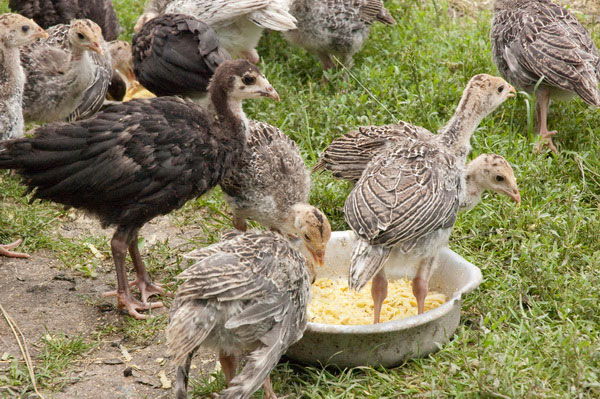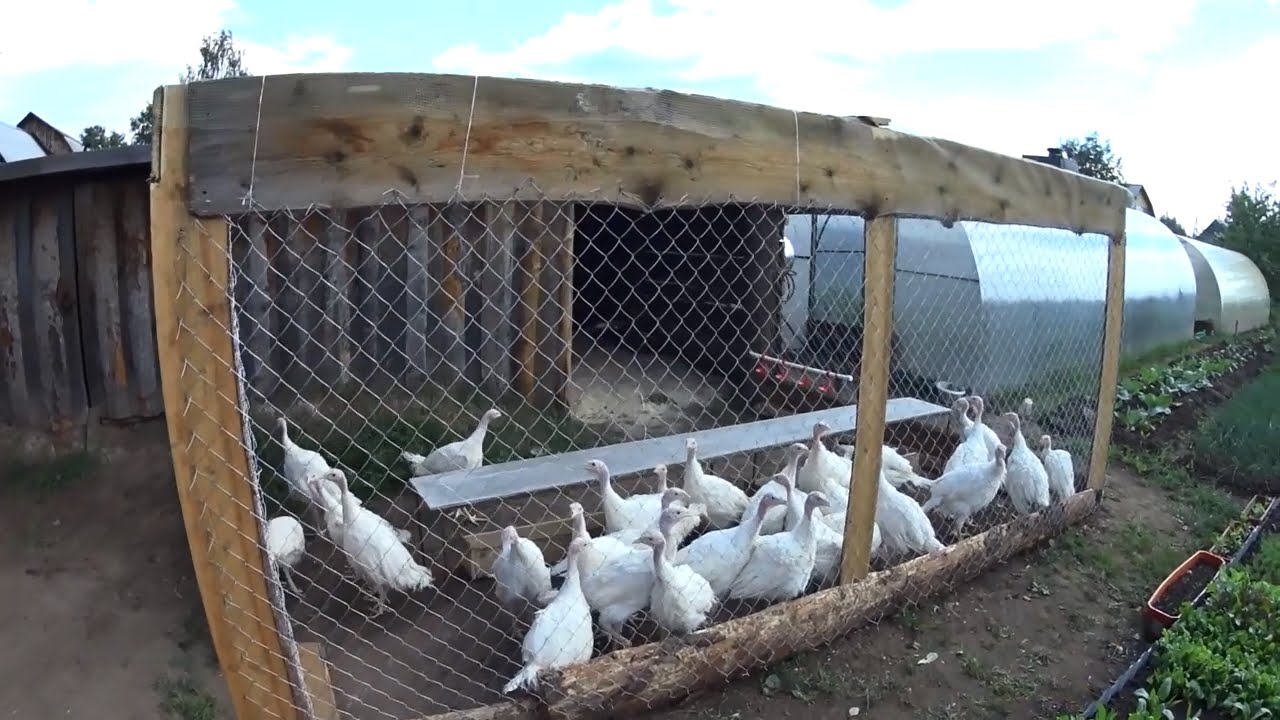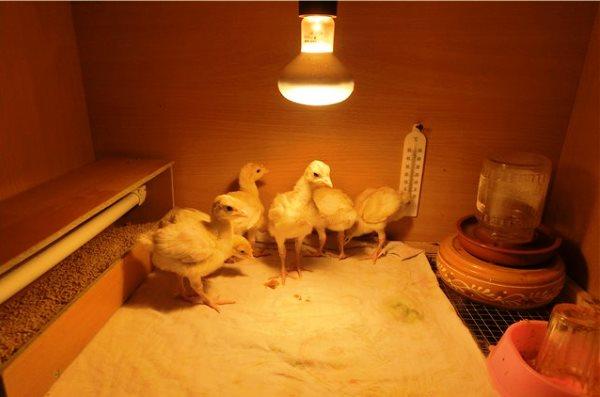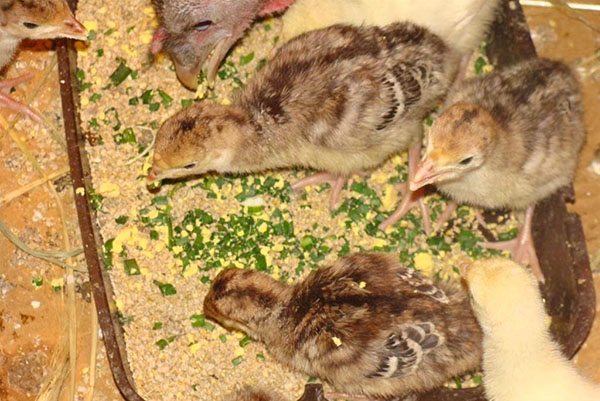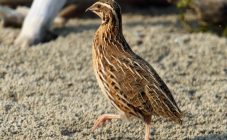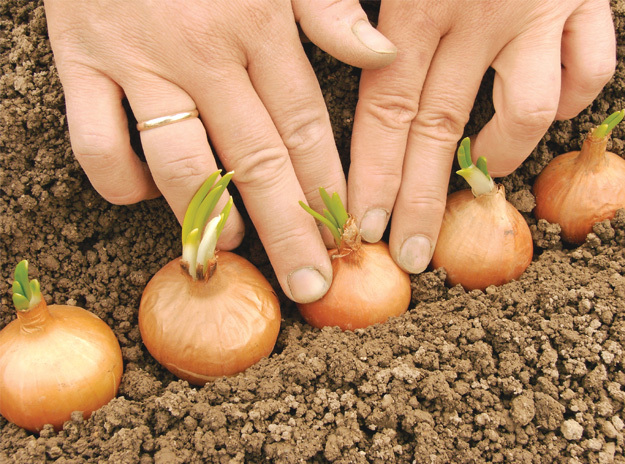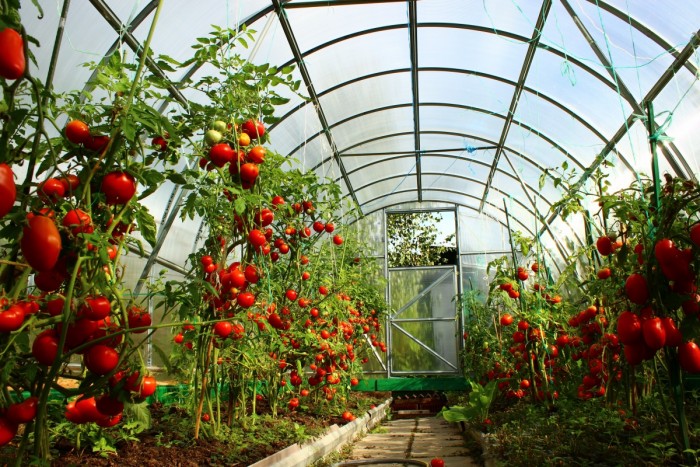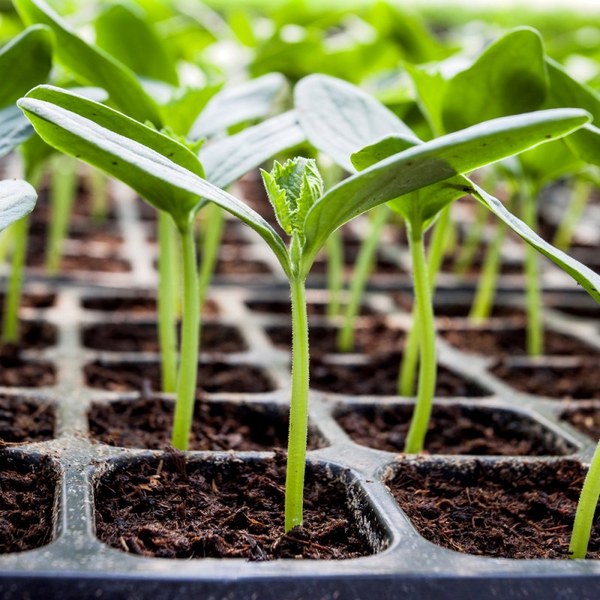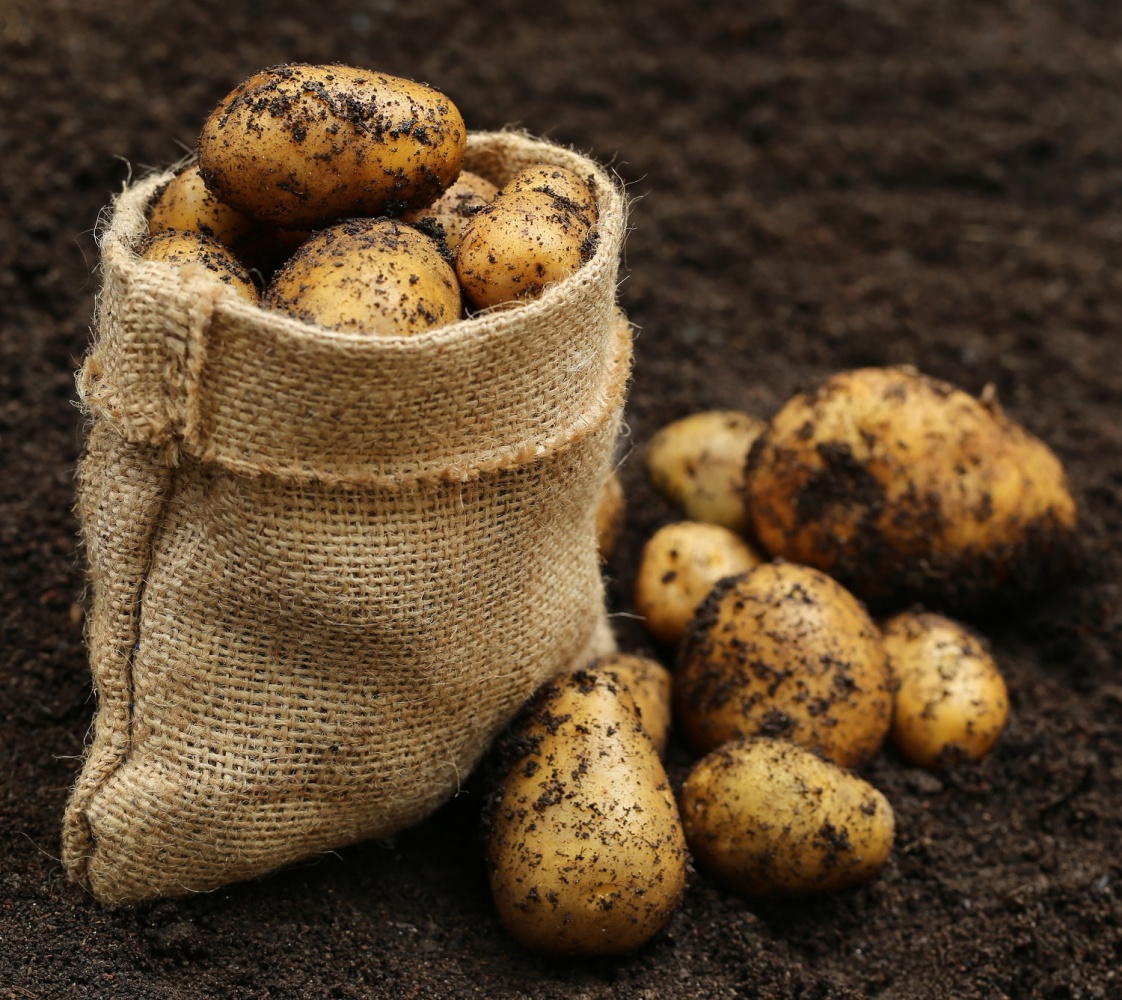Content:
Turkey meat is healthy - dietary and very tasty. But still, many novice poultry farmers are not eager to have turkeys, arguing that they do not survive well and require increased attention. But if you know all the intricacies of growing turkey poults: temperature and heat conditions, feeding rules, etc., then everything will definitely work out. With proper care, a small fluffy lump will turn into a large bird in 6 months, which will first delight the farmer with its majestic and proud appearance, and then with the amount of good meat.
How to keep turkeys
There are many ways to keep this bird species. On a large scale, the cellular method of keeping is more popular, at home - the walking open or aviary method.
Cellular
In this way, low-weight poultry is grown up to a maximum of four months or young animals up to one and a half months of age.
Unfortunately, there are not so many advantages:
- Saving space. You can keep the bird in two tiers.
- Increase in livestock. Thanks to this arrangement, you can grow one and a half to two times as many turkeys.
- Increase in labor productivity.
Disadvantages:
- In a confined space, the growth of young animals slows down.
- From the lack of movement in the bird, the leg muscles weaken.
- Without movement, fat builds up more than meat.
- Stress and trauma. The bird becomes fearful and at the slightest sound falls into hysteria, beats against the cages.
Novice poultry farmers are often tormented by the question of when it is possible to release turkey poults out into the street, for an open range?
Outdoor walking
At what age can small turkey poults be released outside?
And if the chicks grow alone, then from one and a half months. On an open range, turkey poults find their own food: green grass, bugs, worms, etc. At this time, the main diet consists of grains and grass, although they will not give up the mash.
With this growing method, there are undoubtedly more pros than cons:
- Savings in feeding costs.
- With daily stress on the muscles, the birds turn out to be healthy and beautiful.
- Improving immunity.
- Chickens grow faster.
There is only one drawback: the constant presence of a person is necessary.
Aviary method
For this method of growing turkeys, a spacious aviary is built at the rate of approximately 10m² per bird. A canopy should be made over the aviary, under which the turkeys could hide from the rain or the scorching sun. You will definitely have to make neat feeders and drinkers.
Rules for keeping turkey poults
At home, to obtain offspring, you can start a family consisting of one turkey and three or four turkeys. But first, you can evaporate the brood of chicks using an incubator or buy relatively adult chicks. In private farms, broiler turkeys, crosses and Big-6 are more often grown - these are the ones that beginners should pay attention to.
Healthy turkey poults are firmly standing and very mobile chicks, with dry bottoms and clean down.The umbilical cord must be completely healed and dry. The wings should not part, but should be pressed against the body. Healthy chicks consume food quickly.
Temperature regime
In the first 7-10 days, turkey poults should be placed in a brooder - structures for warming chickens. The temperature in the turkey brooder is kept constant day and night - it should be 33-35 ° C above zero. At a lower temperature, the chickens will bunch up, eat poorly, and at a higher temperature, they will lie, gasping for air.
In the second week, the temperature can be lowered to 30 degrees. And in the third week, the temperature can be lower by another 5 degrees. In the table below you can see what the optimal room temperature should be for chicks and turkeys.
Temperature regime for turkey poults - table
| Poultry age, days | Cellular content | Outdoor content | |
|---|---|---|---|
| Temperature under brooder | Indoor temperature | ||
| 01.02.2018 | 35-33 | 37-36 | 27 |
| 03.04.2018 | 33-31 | 36-35 | 26 |
| 05.06.2018 | 31-30 | 35-34 | 25 |
| 07.10.2018 | 30-27 | 32-30 | 24 |
| 01.11.2015 | 27-24 | 29-28 | 23 |
| 16-20 | 24-22 | 26-25 | 22 |
| 21-25 | 22-21 | 25-24 | 21 |
| 26-30 | 21-20 | 23-22 | 20 |
| 31-35 | 20-19 | 21 | 19 |
| 36 and more | 18 | - | 18-16 |
Based on this table, it is clear what the temperature should be in monthly turkeys, therefore, if the mark on the thermometer on the street corresponds to the data, then they can be released for walking. The temperature chart of the poultry should be in front of your eyes so that the bird owner does not accidentally forget to change the heating level.
Lighting
In the first decade, lighting is needed 24 hours a day, at night it is necessary to turn on the lamp. Gradually, the longitude of the light period is reduced so that by two weeks the daylight hours do not exceed 17 hours.
Proper feeding of turkeys
When deciding to breed turkeys at home, you need to adjust their diet from the first days of life. The food should always be fresh and varied. Care must be taken to ensure that the birds receive all the substances they require. Young turkeys should have enough energy for the whole day.
To do this, the feed should have enough:
- microelements;
- macronutrients;
- vitamins;
- fat;
- proteins;
- carbohydrates.
For disinfection, one or two crystals of potassium manganese can be added to the water. In free access, there must be a container containing finely chopped shell, fine gravel and chalk.
In the first 7 days, turkeys need to be fed 8-9 times a day, then gradually transfer them to three meals a day. It is imperative to give a mash, which should include:
- bran;
- crushed millet;
- Hercules;
- crushed wheat;
- greens;
- cottage cheese;
- sour milk or sour milk.
The amount of feed should be such that it does not stay and sour.
After four or five weeks, the turkey poults have already grown up and can eat a variety of foods. But the water must be given still warmed up. Add fishmeal and mineral additives by mixing them into food or pouring them into a separate container. You also need to add table salt. Grown turkey poults can be given potatoes, beets and carrots; in boiled, stewed and fried form. You can give cabbage and pumpkin raw.
Knowing the optimal temperature in the room, the rules of feeding and keeping, it will become much easier to raise young turkey offspring. This means, towards the end of the season, delicious dietary meat will be on the table.
